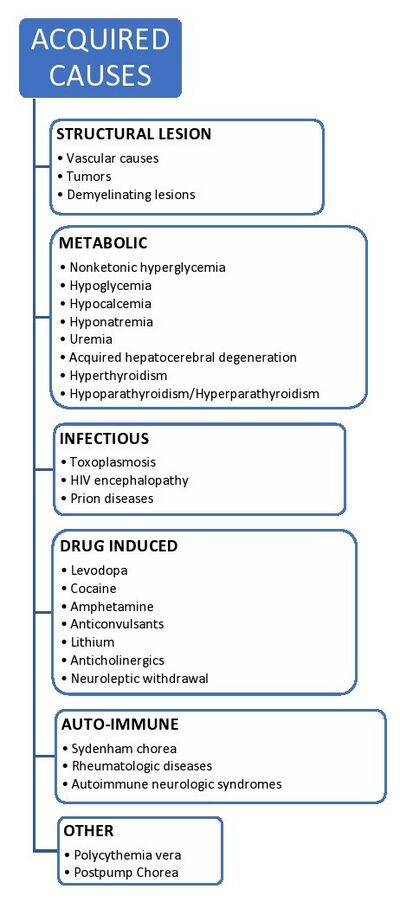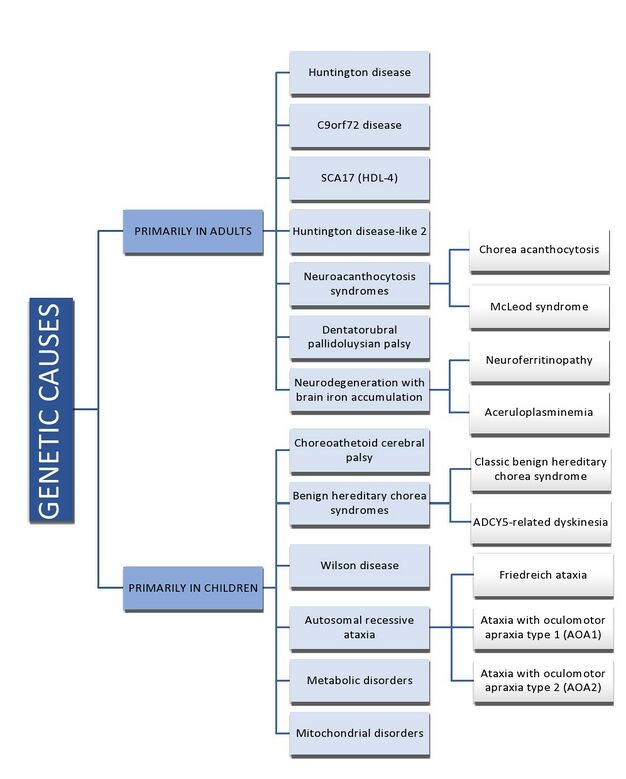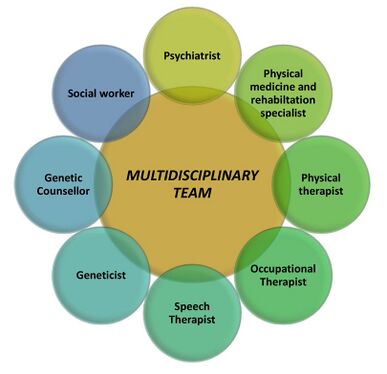Chorea: Difference between revisions
No edit summary |
(added reference to video) |
||
| Line 27: | Line 27: | ||
{{#ev:youtube|RxWEilu-Mf4}} | {{#ev:youtube|RxWEilu-Mf4}} | ||
This video displays the dance-like movements performed by a patient. | This video displays the dance-like movements performed by a patient.<ref>neurosigns.org. Chorea. Available from https://www.youtube.com/watch?v=RxWEilu-Mf4&ab_channel=neurosigns.org</ref> | ||
== Diagnosis == | == Diagnosis == | ||
Revision as of 18:03, 5 September 2022
Introduction[edit | edit source]
The word Chorea has Greek origins meaning "to dance". It has a dance-like appearance due to the random and flowing quality of the movement. Chorea is a type of hyperkinetic movement disorder. The involuntary movements flow from one body area to another which cannot be predicted beforehand.
Causes[edit | edit source]
They are predominantly of 2 types[1]
- Acquired Causes
- Genetic Causes
Phenomenological Features[edit | edit source]
- Randomness
- Flowing Quality
- Parakinesia-Patients blend their chorea-induced movements with their own normal movements.
- Motor impersistence- the patient is unable to perform sustained motor activities.
- Ballism- Variant of chorea which shows large-amplitude flinging movements involving proximal extremities.
- Athetosis-Slow writhing movements involving distal limbs sometimes may be facing.
- Varying velocity of movements-quick velocity and low-amplitude movements accompanied by jerks.[1]
This video displays the dance-like movements performed by a patient.[2]
Diagnosis[edit | edit source]
The phenomenological features mentioned above are observed to make a diagnosis of chorea.
Differential Diagnosis[edit | edit source]
Specific diagnosis can be made on the basis of symptoms/clinical features experienced by the patient. These symptoms serve as diagnostic clues and are present as 3 body distributions and other crucial features.[1]
1. On Forehead- Huntington Disease.
Wiggling of the eyebrows or activation of the frontalis muscle is present.
2. On Orobuccolingual region- Tardive Chorea, Acquired Hepatocerebral Degeneration ,Chorea-acanthocytosis, Lesch-Nyhan syndrome, PKAN(dystonia), Lubag Disease(dystonia).
Bonbon sign and problem of inappropriate intake of food is seen which cause biting of lips and tongue.
3. Localized to the contralateral subthalamic nucleus(hemichorea)- Nonketonic hyperglycemia, Polycythemia vera, Sydenham Chorea, Others.
Some disorders which are differentially diagnosed are given in the table below-
| Disorder/Symptom | Differentiating Factor from chorea |
|---|---|
| Dystonia | Predictable patterned movements |
| Dystonic Tremor | Irregular and jerky does not have a flowing quality like chorea |
| Myoclonic jerks | Randomness quality of chorea differs the two |
| Tics | Presence of premonitory urge and suppressibility |
| Stereotypies | Has stereotypic movement as if the video is running on a repetitive loop |
| Large amplitude cerebellar outflow tremor | Regular oscillation around the axis and activation of tremor with movements( postural and kinetic components) |
Multimodal Management[edit | edit source]
Chorea requires a Multidisciplinary Approach to be treated.[3]
The team includes
- Psychiatrist
- Physical medicine and Rehabilitation Specialist
- Physical therapist
- Occupational therapist
- Speech therapists
- Geneticist
- Genetic Counselor
- Social worker
Medical Management[edit | edit source]
1. Dopamine-depleting agents-Tetrabenazine, Deutetrabenazine, Valbenazine.
2. Dopamine D2 receptor-blocking agents-Haloperidol, Clozapine, Olanzapine.
3. Anticonvulsants- Valproic acid, Carbamazepine, Benzodiazepines, Levetiracetam.
4. Anti-glutamatergic agents-Amantadine, Riluzole.
5. Cannabinoids-Nabilone.
6. Deep Brain Stimulation
Physiotherapy Management[edit | edit source]
The management will be same as of Huntington's Disease. You can read it here.
References[edit | edit source]
- ↑ 1.0 1.1 1.2 Termsarasab P. Chorea. CONTINUUM: Lifelong Learning in Neurology. 2019 Aug 1;25(4):1001-35.
- ↑ neurosigns.org. Chorea. Available from https://www.youtube.com/watch?v=RxWEilu-Mf4&ab_channel=neurosigns.org
- ↑ Feinstein E, Walker R. An update on the treatment of chorea. Current Treatment Options in Neurology. 2018 Oct;20(10):1-5.









